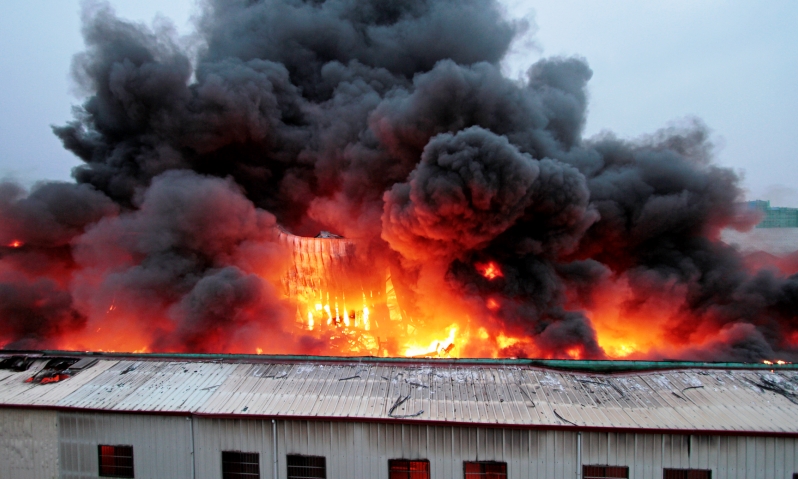Weld Fume Combustibility: An Investigation
 Are weld fumes combustible? In the metalworking industry, it is a common perception that weld fumes are composed of fully oxidized particulate and are therefore inert and not combustible. However, recent studies show weld fumes can contain both oxidized and unoxidized compounds. This creates the possibility that weld fumes could, under certain conditions, be considered a combustible dust. How concerned should welders and plant managers be about weld fume combustion? We took a look at the scientific literature to find out.
Are weld fumes combustible? In the metalworking industry, it is a common perception that weld fumes are composed of fully oxidized particulate and are therefore inert and not combustible. However, recent studies show weld fumes can contain both oxidized and unoxidized compounds. This creates the possibility that weld fumes could, under certain conditions, be considered a combustible dust. How concerned should welders and plant managers be about weld fume combustion? We took a look at the scientific literature to find out.
Weld Fume Composition and Combustibility
First, the good news: there do not appear to be a lot of documented cases of weld fume combustion in the literature or OSHA records. However, the chances of a combustible dust explosion due to weld fume are not zero. The combustibility of weld fume depends on many factors such as the chemical and physical characteristics of the solid particulate as well as the presence of other gases and vapors in the fume.
One key factor is the relative presence of oxidized vs. unoxidized metal particles in the fume. Unoxidized metal particles can be highly combustible under the right circumstances, while fully oxidized metallic particles do not provide fuel for further combustion. Most weld fume contains a mixture of both oxidized and unoxidized particles, depending on the welding methods, techniques and materials used. The OSHA Technical Manual on combustible dust notes that many dusts are still considered combustible when partially oxidized because they have not yet reached their “lowest energy state” (that is, they are not yet considered inert):
“However, many dusts are not in their lowest energy state and are combustible even in partially oxidized form. For example, many iron oxides (such as rust particles), although partially oxidized, can oxidize further when a sufficient energy source and oxygen are available. In addition, some materials may have a passivated coating (e.g., a thin oxide layer or anodized surface) which can be eroded or worn away, exposing the bare metal surface.”
Other factors that influence the combustibility of weld fume include particle size distribution, particle morphology (shape), moisture content, and atmospheric composition, especially the presence of inerting gases used as shielding gases during welding.
In one study, weld fume was found to be potentially explosive at ambient temperatures, with a measured KSt value of 94 bar/ms. The study concluded that “despite the high temperature of the welding process, the dust that was produced was not sufficiently oxidized to become inert.” These results have been corroborated through analyses by private companies involved in Dust Hazard Analysis.
This means that it is theoretically possible for weld fume to combust under the right circumstances. While the risk may be low, high concentrations of partially oxidized weld fume in an enclosed space could create the necessary conditions for a combustible dust explosion. For an explosion to occur, five essential elements must be in place – collectively known as the “Dust Explosion Pentagon.” These elements include:
- Fuel (e.g., unoxidized weld fumes or other combustible particles in the air)
- Oxygen (from the air around us)
- Ignition source (sparks from the weld torch or other spark- or heat-producing processes)
- Dispersion (particles suspended in the air in a dust cloud)
- Confinement (enclosure of the dust cloud in a confined area that allows pressure to build up)
Preventing Weld Fume Explosions
Even though the risks of weld fume explosions are likely to be low, appropriate precautions must be taken when working with any dust with a Kst value higher than zero. The Kst value of weld fume (that is, how explosive the dust is) is sample-specific and will depend on the materials used, welding methods and environmental factors. A Dust Hazard Analysis (DHA) is conducted to determine the explosive characteristics of the weld fume sample.
When working with weld fume, the biggest explosion risk is likely to be within the dust collection system itself. Precautions should be taken when collecting potentially explosible welding fume. These precautions fall into two categories:
- Reducing the risk of a combustion event by eliminating one or more elements of the Dust Explosion Pentagon.
- Adding safety elements to the dust collector to mitigate the potential impacts of a dust collector fire or explosion if one should occur.
Steps that welders and plant managers can take to protect themselves from a dust explosion inside the collector include:
- Keep sparks out of the ductwork or dust collector filter chamber using an inline spark arrestor or other spark control technology.
- Prevent dust clouds from accumulating inside the dust collector filter chamber and ductwork.
- Use the right dust collector filters and change them when they become loaded.
- Keep up with maintenance.
- Have a working smoke detector and fire suppression system for your dust collector.
- Consider adding an NFPA-compliant deflagration system to your dust collector.
Need help addressing weld fume safety? At RoboVent, we’re the weld fume collection experts. We can help you assess health hazards and combustion risks of weld fume and design a solution that is OSHA- and NFPA-compliant.
Contact Us With Your Questions!
SUBSCRIBE TO
BLOG UPDATES









